Connecticut Native Plants List: 14 Beautiful Flower Garden Choices


If you live in Connecticut, My Home Park has 12 pre-designed gardens that bring together diverse sets of New England native plant species produced by expert, organic growers who draw on diversified east coast gene lines.
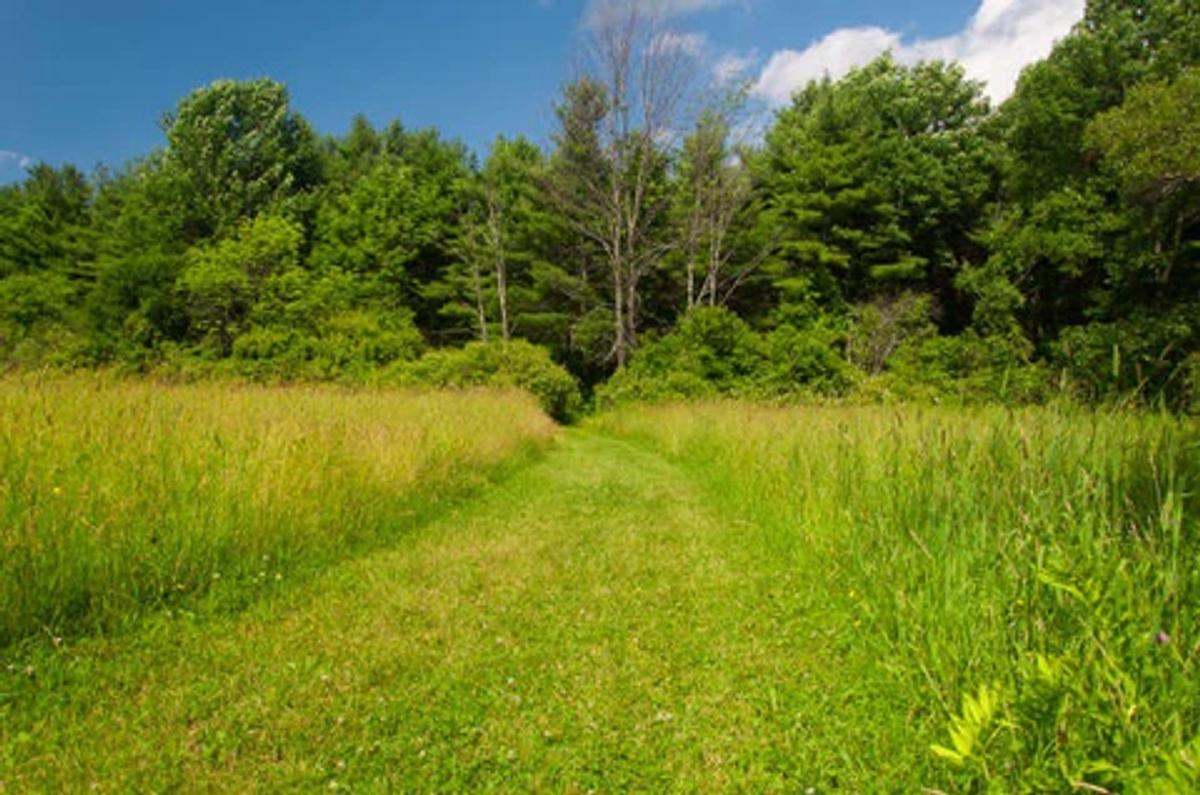
Connecticut hosts a remarkable variety of native plants that thrive in Connecticut's unique coastal environment. In fact, Connecticut's state tree, the White Oak (Quercus alba), and its state flower, the Mountain Laurel (Kalmia latifolia), are among the many plants that have adapted perfectly to Connecticut's landscapes. As you'll soon discover, cultivating native plants in your Connecticut garden offers numerous benefits. Whether your yard enjoys ample sunlight, some gentle shade, or the cover of dense woods, these 14 native plants will lay a strong foundation for creating flourishing and ecologically supportive gardens. Before we delve into the specifics, let's explore why native plants are so essential for your Connecticut landscape.
What are Native Plants?
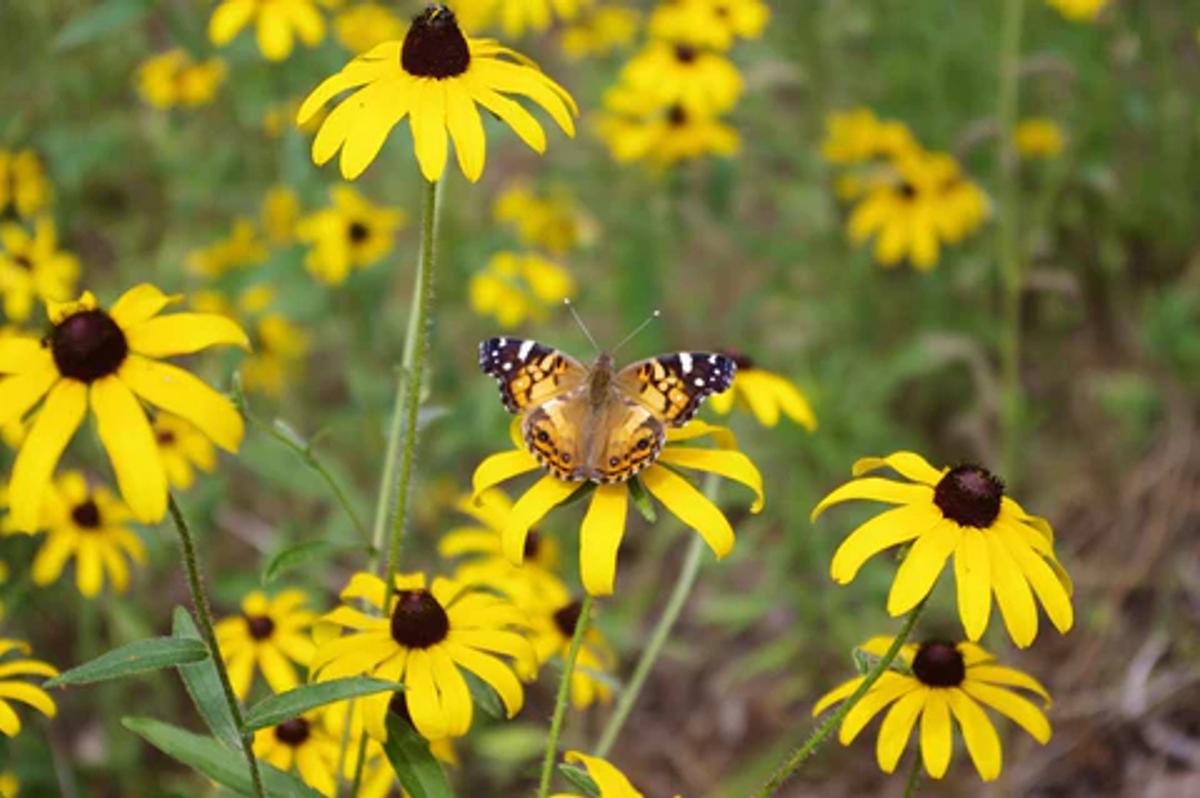
Connecticut's native plants are those that have thrived in the region we now know as the Constitution State (and throughout much of eastern North America) for countless generations. The species we encounter today are the descendants of ancestral plants that flourished in Connecticut's ecosystems long before the arrival of European settlers. Over time, these plants have developed remarkable adaptations to thrive in Connecticut's unique environment and climate while providing essential habitats for wildlife.
Connecticut's native plants not only directly support local ecosystems but also make outstanding additions to gardens and landscapes. These plants typically grow quickly, naturally withstand drought conditions, require minimal fertilization, and demand little maintenance. Selecting the right native plants for your specific area in Connecticut can enhance the beauty and ecological value of any landscaping project.
Why are Native Plants Important?
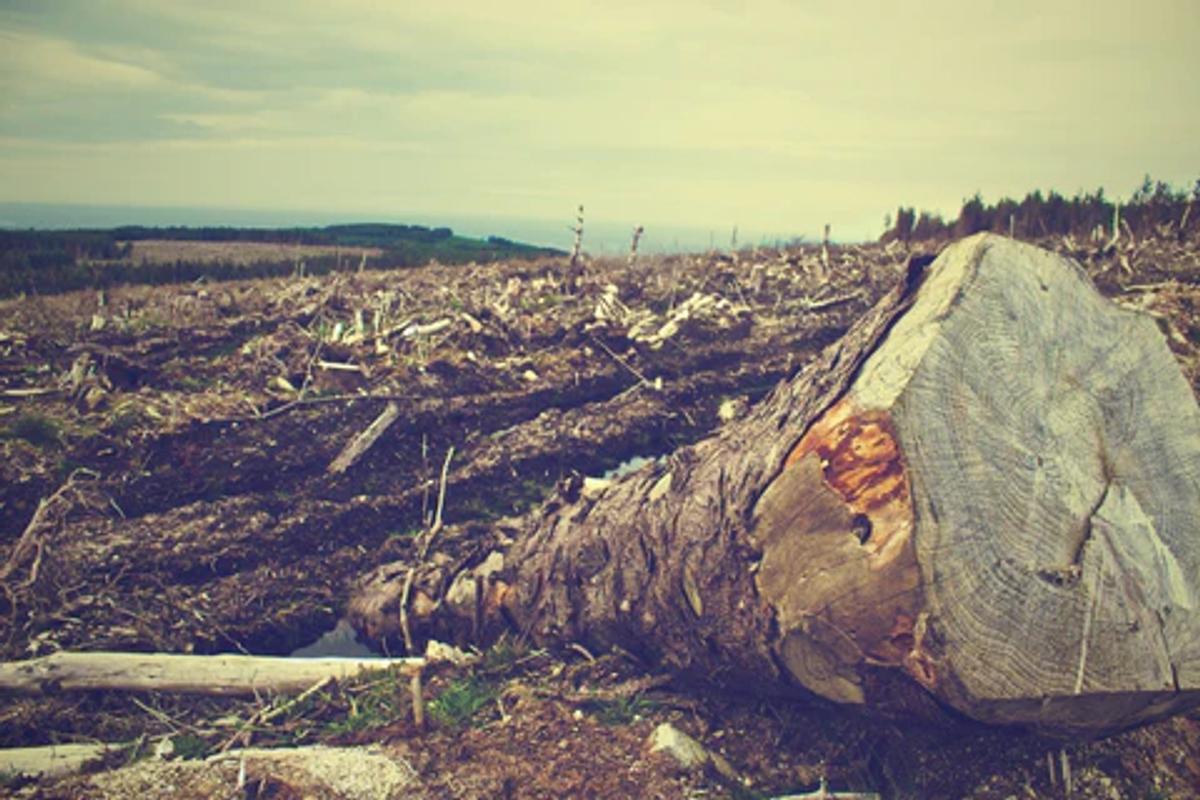
There has been an ongoing and incredible loss of animal life worldwide over the past 150 years. This tragic population crass has affected almost every major group of wildlife, including the many bees, butterflies, birds, and other beneficial pollinators that allow our natural world to function. A leading driver of this crash is habitat loss due to land mismanagement: as humans, we've spent far too long removing the native trees and herbaceous perennial plants our native fauna needs and replacing them with non native species that do little or nothing to help.
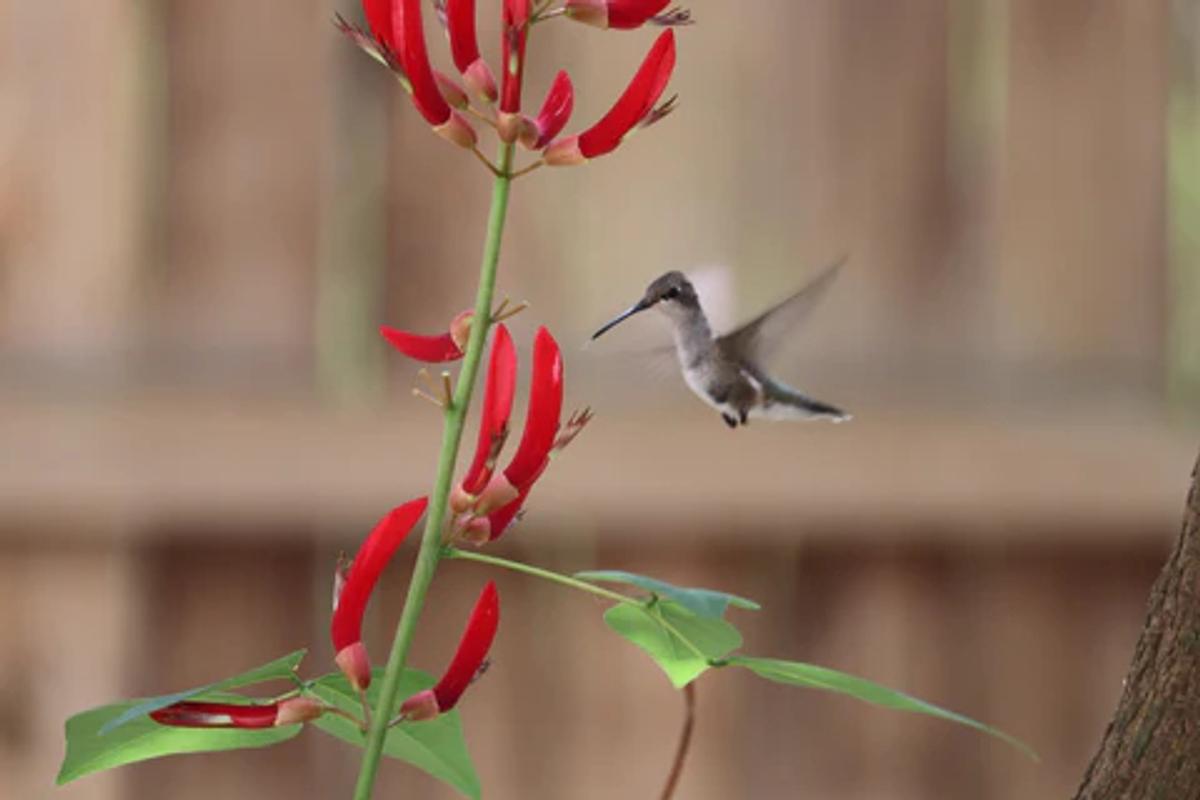
By contrast, the trees, grasses, flowers, and shrubs native to their areas are especially well-adapted to provide ecosystem services. Native plants provide food and offer shelter and other resources for many pollinators, birds, and other beneficial creatures. Connecticut native plants also tend to cycle nutrients into the soil more efficiently, retain more storm water, and require very little maintenance compared to any kind of turf grass or cultivated ornamental you might find at standard Connecticut nurseries.
Further, many species of Connecticut native plants can survive in poor and sandy soils and are drought tolerant and deer resistant once established. Simply by choosing to buy Connecticut native plants for your garden beds or other landscaping efforts, you can directly help to reduce atmospheric CO2, create fertile soil, and reestablish a healthy natural environment where you live.
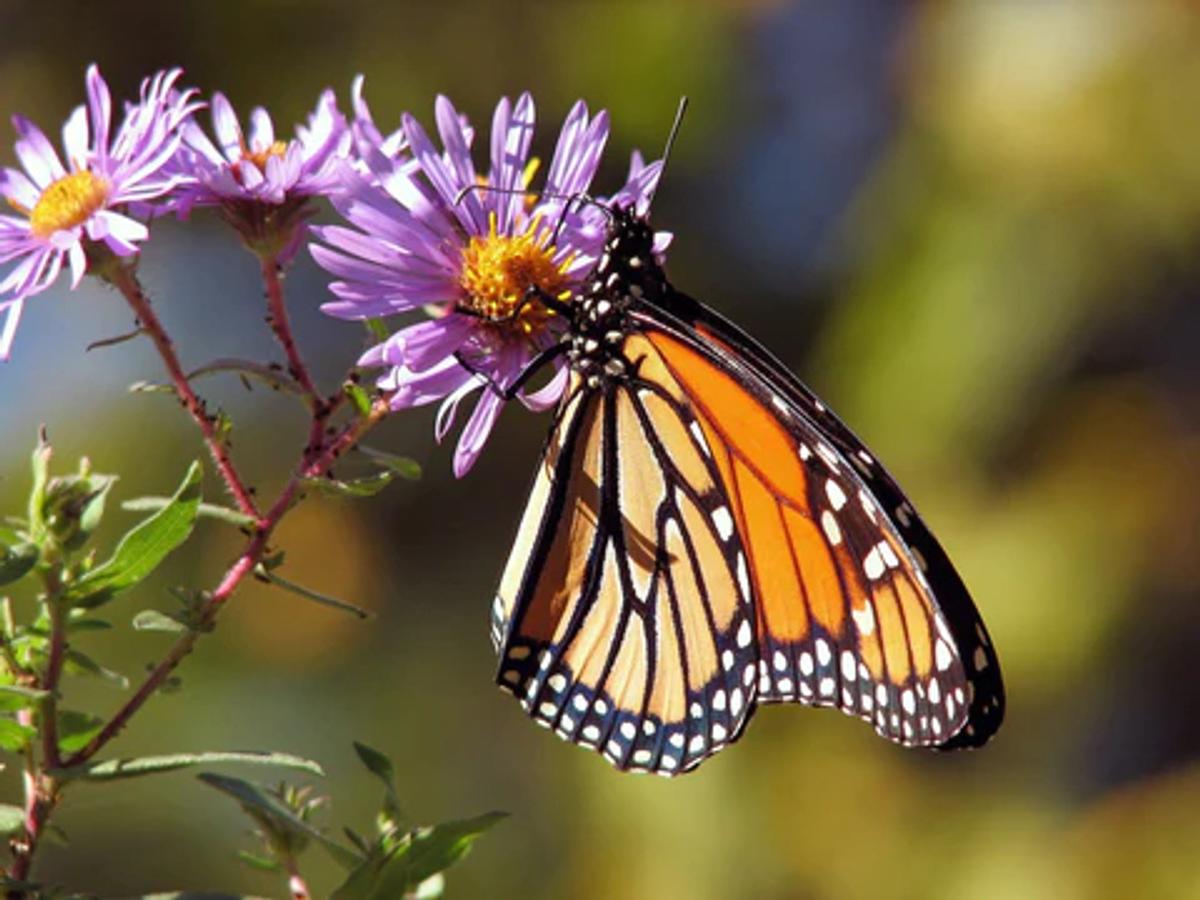
Native Plants of Connecticut
Below, I share just a handful of the many Connecticut native plants available to you, and split them into three major plant lists of sun exposure: Full Sun, Part Shade, and Full Shade. Doing this will hopefully help you get started identifying some of the right plants for your local growing conditions. Each one of the plants listed will support many beneficial insects and some can be found, along with other Connecticut native plants, in My Home Park's pre-designed gardens for Connecticut.
Native Plants for Full Sun
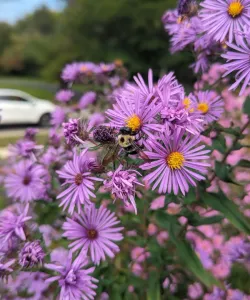
New England Aster is a a great statement plant with vibrant purple flowers that bloom from late summer to fall. This plant can reach a height of 3 to 6 feet, and will thrive in full sun to partial shade with well-drained and dry soil. This aster species is not only beautiful but also ecologically significant. Its nectar-rich flowers will attract bees, butterflies, and other beneficial insects to your yard. As a late-season bloomer, it helps support these pollinators during a critical time of year when food sources may be limited.
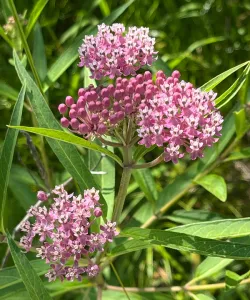
Rose Milkweed, also commonly referred to as Swamp Milkweed, is a wonderful choice for first-time gardeners looking to make a positive impact on their environment. With its striking flat clusters of pink or mauve flowers and long, slender leaves, this native perennial not only adds beauty to your garden but also supports important pollinators like butterflies and bees with its mid summer blooms. Easy to care for and adaptable to various soil types (though favorable to moist soil), Rose Milkweed is a perfect starting point for those new to gardening, providing a splash of color while contributing to the health of local ecosystems.
As a member of the Asclepias genus of milkweeds, Rose Milkweed also provides endangered Monarch Butterflies with a place to lay their eggs. Monarch Butterfly caterpillars feed exclusively on milkweeds, so by cultivating Rose Milkweed in your garden, you'll be creating a stunning landscape while also contributing to the conservation of this fragile species.

Connecticut marks the northernmost reaches of the Trumpet Honeysuckle's native range. This woody vine is native to the east and southeast US that blooms with vibrant, orange-red tubular flowers from late spring through summer, attracting hummingbirds and other pollinators with its nectar-rich blooms. It can reach a height/length of 6 to 15 feet, making it suitable for trellises, arbors, fences, and other supports where its dark green leaves offer attractive foliage. This plant will thrive in full sun and is adaptable to most well-drained soil. Once its blooms are past, it forms bright red berries that will attract birds.

Garden Phlox is a native plant naturally found in woodland clearings and edges, but it's so commonly cultivated that it's earned the name garden phlox. In late summer and early fall, it erupts into airy round clusters of strongly fragrant pink flowers. Garden Phlox attracts hummingbirds and clearwing moths, which are hummingbird mimics (they're also called hummingbird moths for this reason)! These fascinating moths have feathery bodies and fly and hover just like hummingbirds. Garden Phlox can suffer from powdery mildew, which causes white spots on the foliage that do not harm the plant. Phlox can aggressively self-seed and is best paired with other vigorous plants.
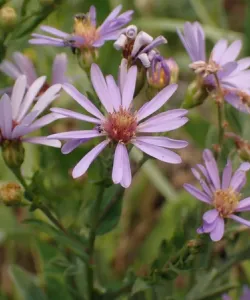
A shorter member of the Aster family, Smooth Aster offers both similar visual appeal and ecological benefits to gardens and landscapes as New England Aster but with less overall height. Like other Asters and Goldenrods, its pale lavender to blue flowers bloom from late summer to fall and provide a valuable nectar source for pollinators when many other plants have finished flowering. This aster typically grows to a height of 2 to 5 feet, and thrives in full sun to light shade.
Native Plants for Part Shade
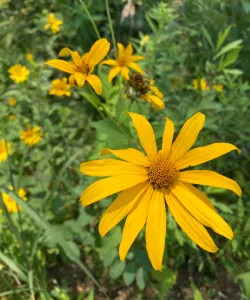
Pale-leaved Sunflower is a charming native perennial that boasts bright yellow blooms from late summer to early fall. Its lance-shaped leaves are pale underneath, giving the plant its distinctive name. This plant grows to a height of 3 to 6 feet, and will thrive in partial to full sun, making it adaptable to a variety of growing conditions. Once its extended bloom period has finally ended, the seeds of Pale-leaved Sunflowers are a favorite of many bird species, particularly in the fall when they provide a valuable food source before winter arrives.
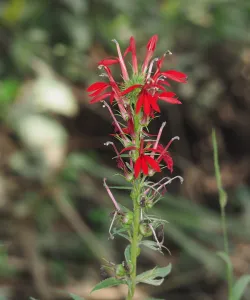
Cardinal Flower is a captivating flowering plant renowned for its showy scarlet-red blooms and its role in attracting hummingbirds and other pollinators. This perennial wildflower thrives in wet soil, typically along the edges of streams, where its vibrant flowers stand out against its dark green leaves. Growing to heights of 2 to 4 feet, this species brings a powerful vertical accent to pollinator gardens and natural settings alike. Its unique color and shape make it a standout choice for attracting attention and biodiversity. This plant's preference for higher soil moisture and partial to full sun aligns well with various wetland restoration projects and rain gardens.
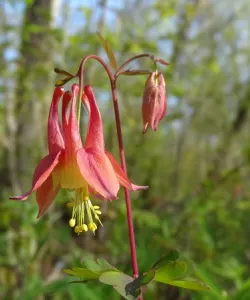
Wild Red Columbine, also called Eastern Columbine, offers unique red and yellow flowers that bloom from late spring to early summer. Growing to a height of 1 to 3 feet, it boasts a graceful growth habit that is just as home in a pollinator garden as in a naturalized area. This plant thrives in partial sun from shade to full sun and is well-suited for woodland gardens, shady borders, and other native landscapes with well drained soils.

Great Blue Lobelia thrives in moist soil to wet soil with partial to full sun exposure. It's naturally found in North American wetlands, making it an excellent choice for rain gardens, stream banks, and areas prone to flooding. Its striking blue flowers are a favorite among pollinators, including bees, butterflies, and hummingbirds. Great Blue Lobelia blooms from late summer to early fall, providing a burst of vivid color when other plants may be winding down. Once established, it requires minimal maintenance, making it an attractive and low-effort addition to your garden.
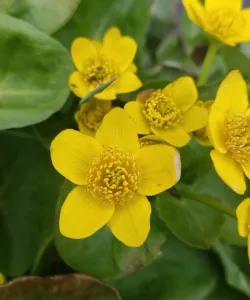
Marsh Marigold blooms with bright yellow, buttercup-like flowers in mid-spring. This plant's preference for moist to wet soil and almost any sun exposure makes it an excellent choice for rain gardens, pond edges, and areas with poor drainage. It's a popular and great low-growing choice for attracting pollinators like bees and butterflies and its shiny, rounded leaves provide an attractive foliage backdrop even when it's not in bloom. Not to be confused with the very similar appearing but highly invasive Lesser Celandine (Ficaria verna), which grows in similar conditions as Marsh Marigold but tends to bloom about a month earlier (around March or early April instead of April and May).
Native Plants for Shade
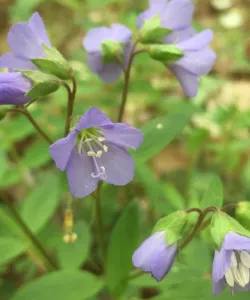
Jacob's Ladder is well-suited for partially to fully shaded areas, where it typically blooms in late spring to early summer. Its delicate, fern-like foliage and clusters of bell-shaped, lavender-blue flowers make for excellent ground cover or border plant while also attracting pollinators like bees and butterflies. Its unique name comes from the arrangement of its leaves, which resemble the rungs of a ladder. Jacob's Ladder prefers well-drained moist soil and is relatively low-maintenance, once established.
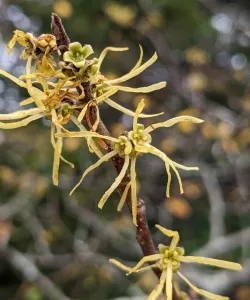
Witch Hazel is a distinctive native shrub known for its pretty clusters of spidery yellow flowers that bloom exceptionally late into the year, typically in late fall or even early winter, adding a unique burst of color to the cooler months. This unique bloom time sets it apart from most other flowering plants. Witch Hazel's leaves often turn vibrant shades of yellow and orange in the fall, further contributing to its visual appeal. This hardy shrub is adaptable to a variety of soil types and can thrive in both full sun, part shade, and even some full shade.

All Goldenrods (plants with a scientific name that includes Solidago) are among the most important native plants in North America because they tend to bloom in late summer and their flowers support so many species of beneficial insects. Zigzag Goldenrod is one example of just a few goldenrods that enjoy life with little sun. This is a great choice for shady pollinator gardens with dry to mesic soil.
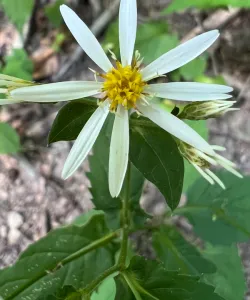
White Wood Aster is a delicate yet resilient native wildflower that features dainty, daisy-like white flowers that bloom in late summer to early fall, providing a late-season burst of color and pollinator support when many other plants have finished flowering. Unlike the other Asters on this list, White Wood Aster prefers partial to full shade. Reaching a height of about 1 to 3 feet, this plant's slender stems, white flowers and heart-shaped dark green leaves will offer both ground cover and attractive structure for any reasonably dry shade garden.

What You Can Do Today
If you live in Connecticut, My Home Park has 12 pre-designed gardens that bring together diverse sets of New England native plant species produced by expert, organic growers who draw on diversified east coast gene lines. Our collections are designed to bloom from early spring to fall, beautifying your landscape while supporting wildlife. Check out our catalog for Connecticut or in any of the other states we serve in New England and beyond to get started today!
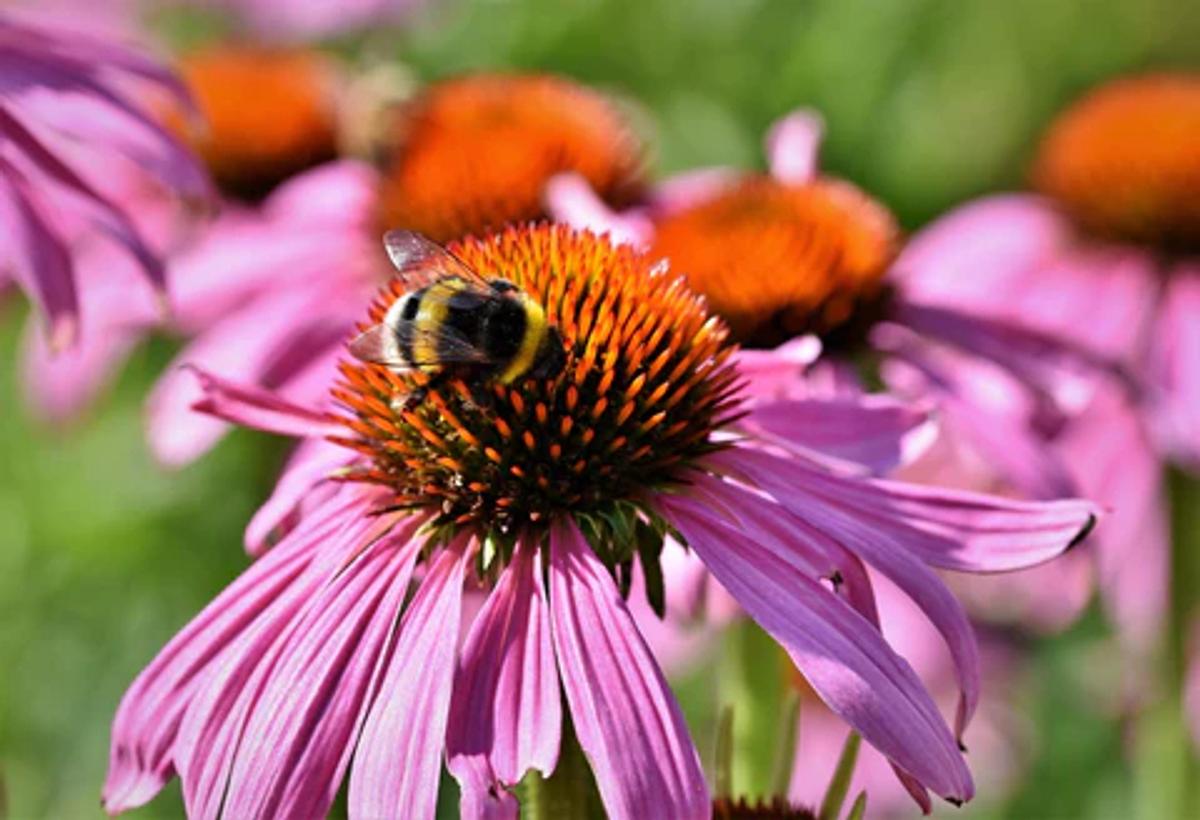
Share this article


